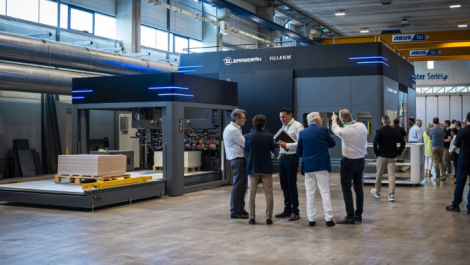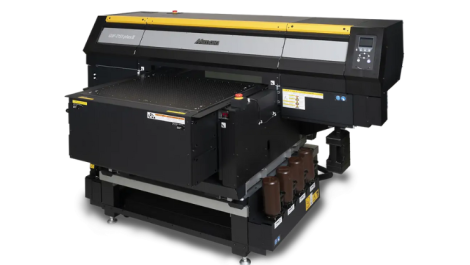Organisers of the industrial printing exhibition, InPrint, believe that research conducted with 350 visitors and exhibitors at the show in Hannover in April has revealed key insight into the key drivers of growth for industrial print technology.
Growth for industrial print, defined as ‘printing that is part of the process of manufacturing’, is powered by general consumer demand for products, coupled with the trend towards mass customisation of production. Currently valued at $100 billion by I.T. Strategies, industrial printing is expected to grow by $20 billion in less than 10 years, largely driven by digital development.
Print technology shown at the InPrint Show included screen and pad printing, digital, inkjet and 3D Printing. The focus was on cutting edge technology that is innovative, precise, robust and durable. The show attracted a different, focused and high quality group of people who came to the event with specific technical challenges and problems to solve. These people were predominantly (53%) from the manufacturing sector with only (28%) from the print industry. The discussions that exhibitors had at the show were therefore very different to those of a regular print trade show.
Attendance came from diverse industries including automotive, aeronautical, ceramics, engineering, electronics, medical, pharmaceutical, packaging and textile, but what united all visitors was their need to search for innovative print technology coupled with technical expertise that provided solutions to new production problems. This ranged from printing directly onto curved surfaces and cylinders, and printing into and within electronic devices, to surface imaging onto wood, metal, glass, textiles and plastics.
Mass customisation is driving huge change within the industrial print sector – where technology can meet a more localised need for production and a more customised and sometimes personalised approach to manufacturing. Digital production provides options not possible with analogue technologies – short set up time, low stock inventory, allied to super quick design to production time and personalised potential for production.
For industrial print, radical displacement of a printing process, ie screen, is much less likely to occur. The demands for production are more complex, and screen printing is robust and high quality as well as being incredibly efficient and fast. The digital opportunity for industrial print is to provide performance that is new and in most cases compliments the analogue technology. Some developing machinery is even a blend of both technologies. This enables the end-manufacturer to realise new possibilities without compromising on quality.
100% of the respondents to the research believed that industrial print is growing, suggesting an exciting future for the sector.




